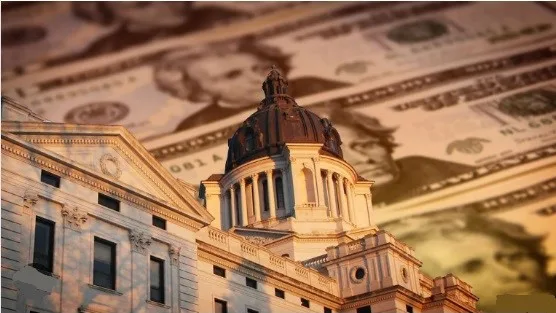Imagine picking up a few items at the grocery store, checking out, and noticing a line on your receipt that says, “Tariff Tax: $7.25.” That would get your attention and spark some questions. Why am I paying this? Who decided this was necessary? Where is the money going?
Now imagine never seeing that line, but still paying the added $7.25. That’s the reality of tariffs.
In 2025, the United States has shifted from an open-trade economy to one burdened by some of the highest tariff rates in modern history. The Trump administration has imposed 25 percent tariffs on imports from Canada and Mexico, two of our closest trading partners, and up to 34 percent on goods from China. That’s not counting earlier rounds of surcharges from Section 301 and 232 duties. These are no longer just negotiating tactics. They’re policy that is already impacting prices, business margins, and family budgets. President Trump’s newest threat of 50 percent tariffs on all European Union imports, delayed until July 9, could extend the price hikes even further.
We’ve been here before. Karl Rove, a Fox News contributor, former deputy chief of staff to President George W. Bush, and author of The Triumph of William McKinley, addressed this directly in an April 30, 2025, appearance on The Michael Smerconish Program, which airs daily on SiriusXM channel 124. He reminded listeners that President McKinley, often seen as a protectionist, eventually evolved to realize that economic isolation would not build America’s prosperity. He ultimately advocated for reciprocal trade agreements that reduced barriers and opened new markets for U.S. goods.
Rove had a pointed message: “Tariffs are taxes…taxes that Americans pay. They’re not paid by exporters. Maybe those countries adjust prices slightly, maybe they cut margins or devalue their currencies, but ultimately it’s U.S. consumers who foot the bill.”
That cuts through a lot of political noise. For years, we’ve been told that tariffs stick it to China or Mexico. That they punish bad actors and make America stronger. But the economic reality is much simpler: tariffs are collected from U.S. importers at the border. Those costs flow down the supply chain and land squarely on you and me.
Yet tariffs are invisible. You won’t find them itemized on a receipt. Unlike a sales tax or even an income tax, you never see the tax, but you still pay it. That’s what makes tariffs politically convenient.
Earlier this year, Amazon briefly considered breaking out tariffs at checkout, the way value-added taxes (VAT) are disclosed in Europe. The Trump administration reportedly pushed back, urging Amazon not to itemize the charges. The message was clear: keep the tax hidden.
When taxes are hidden, accountability disappears. If every American shopper saw a line showing what percentage of their purchase went to the federal government via tariffs, I suspect the debate around them would look very different.
Supporters of tariffs often paint them as a pathway to economic self-reliance and manufacturing resurgence. But so far, there’s little evidence of that. A 2025 Wall Street Journal poll showed just 32 percent of Americans believe tariffs will help the economy. Most are skeptical and with good reason.
Here’s what we’re already seeing:
• Higher prices on basic goods, from clothing to electronics
• Supply chain disruptions and business uncertainty
• Shrinking export markets due to retaliatory tariffs
• Declining consumer confidence
• A widening gap between economic messaging and lived reality
In today’s interconnected global economy, tariffs are more likely to isolate us than empower us.
If we want a strong economy, we need transparency and truth. It’s time we start to see, literally and politically, that tariffs are taxes paid by Americans.


